10 Ways To Run Your Buck Sweep
You have heard it from so many good football coaches at this point. It should be ingrained in your brain. Don’t run a bunch of football plays. Run the same few plays many different ways. It is great advice that has a long record of being proven correct. Naysayers will argue that this stifles creativity. Just how creative can you be running the same play over and over, regardless of how many formations you use? Well, let’s take the staple of many high school coaches out there. Let’s look at some of the many different ways you can run the Buck Sweep. Hint. They are not all Wing T formations.
1.
If you are going to run the Buck Sweep don’t get too cute before you even start. The Buck Sweep came from the Wing T family. Regardless of if you line up in it or motion to it, this is the staple. You are forcing the defense to play alignment and assignment football. There is an inside and outside game to defend. The wing in the Wing T is what makes this the staple in our opinion.
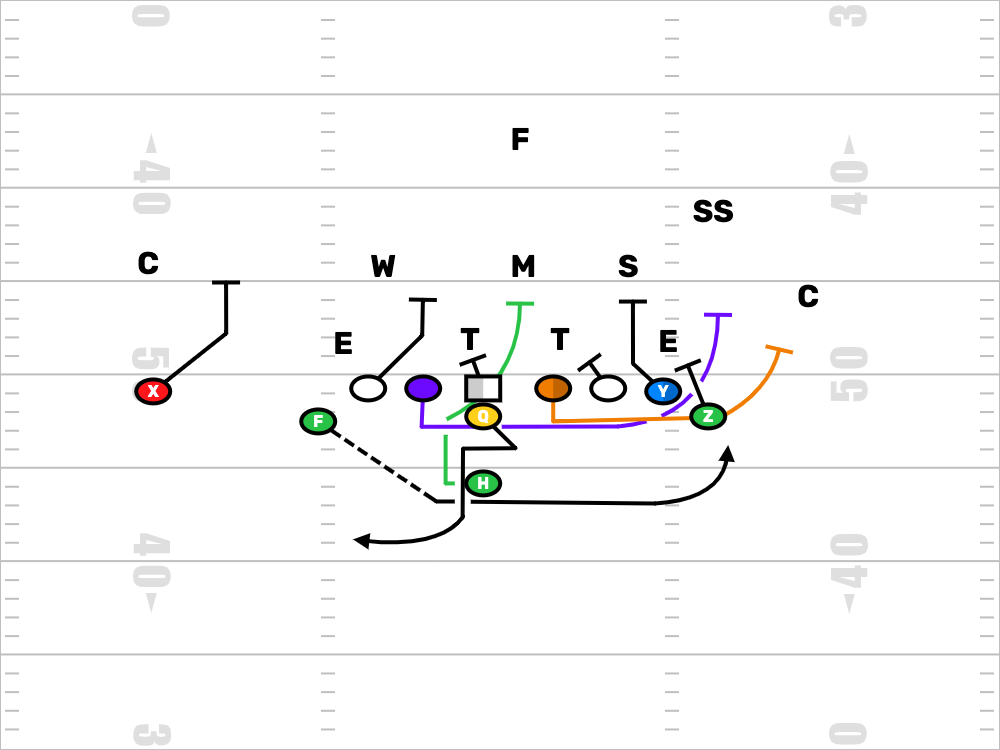
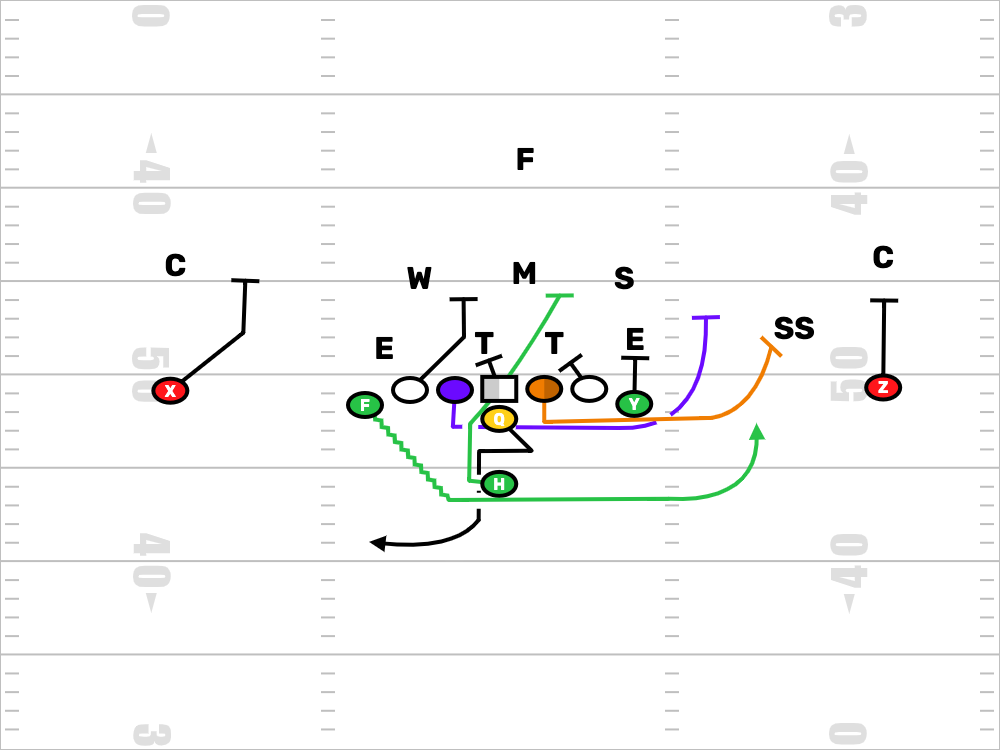
2.
Isn’t it funny how if you move one player outside it can change the way the defense looks at it? Before you doubters claim that no one cares if you line the Z out wide if your quarterback can’t throw, let us remind you that if we lined a receiver up out there with no arms, you would cover him. Also, let us point out that this brings the legal crack block into play and the play action pass off of it. Spread football is here to stay and that includes the Buck Sweep.
3.
Every good football coach looks at their personnel before ever taking one snap. If your squad is fortunate enough to be populated with several talented running backs and tight ends, the Double Wing might be your formation. Defending a tight end with a wing has been a challenge for defensive coaches since the beginning of football. This formation gives you the ability to run the Buck Sweep either way once the ball is snapped. You can also marry the fullback trap with the Double Wing.

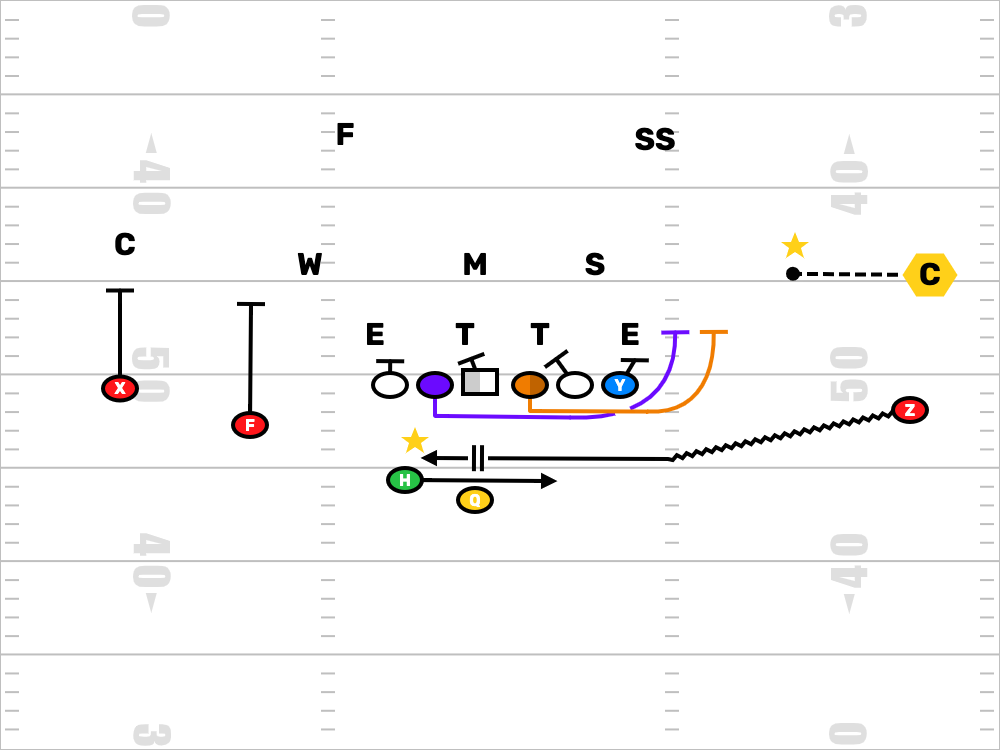
4.
The Jet Sweep was a novel football play a decade ago. Now it is a part of virtually every offense in football. You can combine the traditional Buck Sweep with the newer Jet Sweep with this 2×2 formation. This play also gives your quarterback a chance to be right by reading a defender as the jet sweep comes in motion. If the corner runs with the Jet Sweep runner, you have a nice looking Buck Sweep defense to take advantage of. If the corner stays put, hand the Jet Sweep off.
5.
Whenever you have a core play like the Buck Sweep, you are going to run it a lot. Defensive coaches are smart too. They are going to begin to load up on your core play. This version of the Spread Wing T gives your quarterback the chance to read the weak side linebacker to insure the defense plays it honestly. Like most second level RPO’s, your quarterback will either hand the Buck Sweep or throw the high percentage slant to X based on the reaction of the Will linebacker.
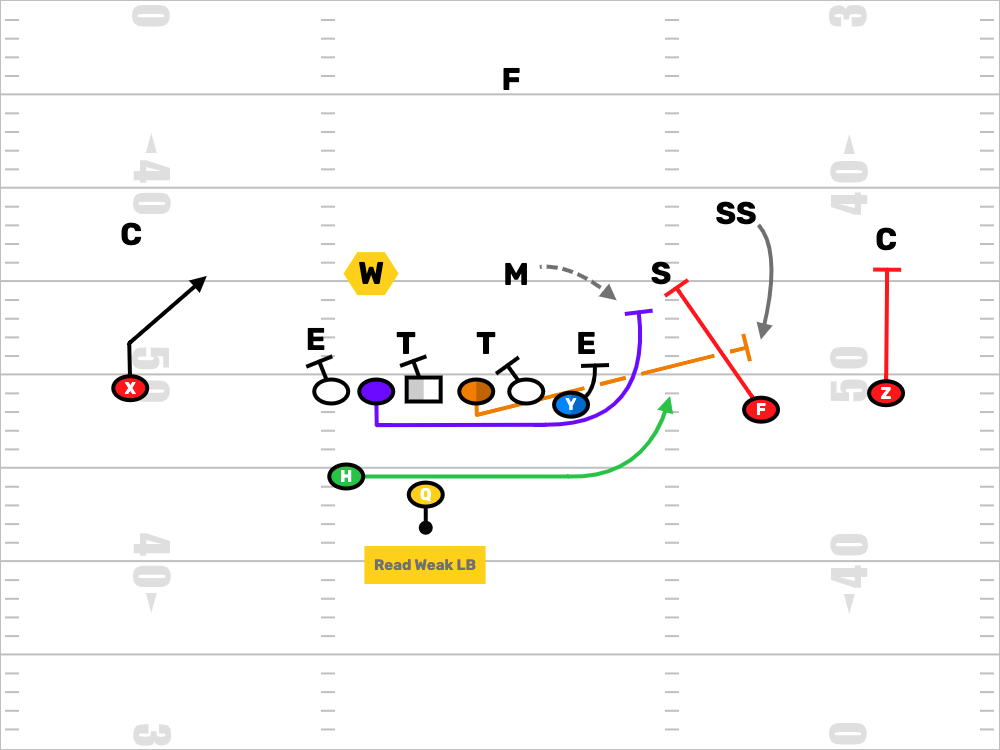
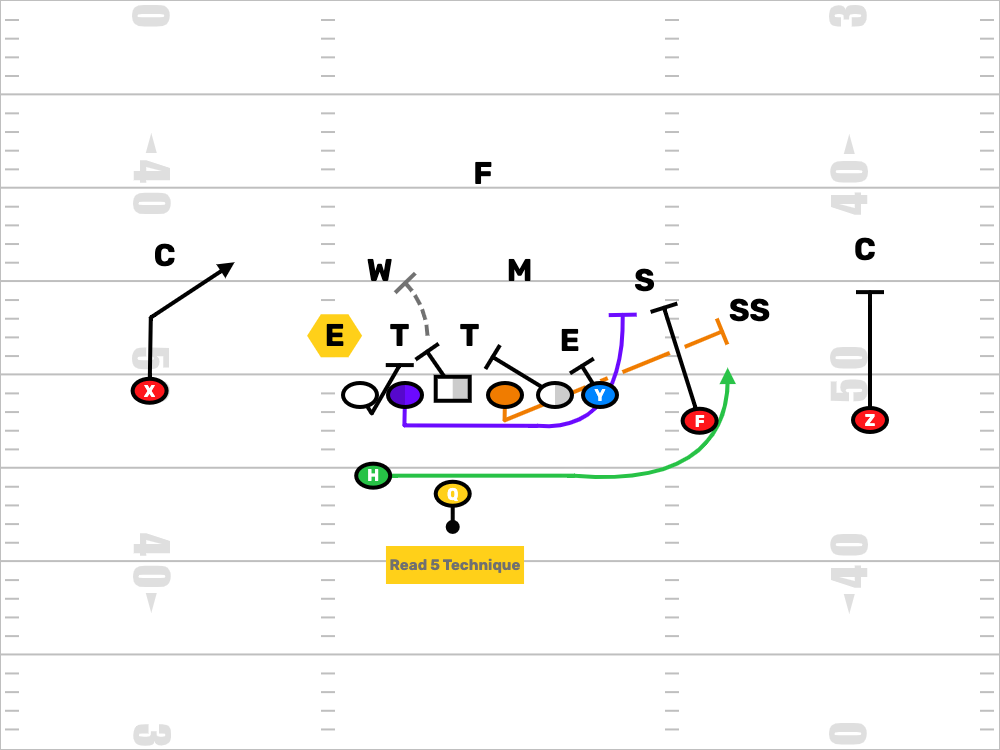
6.
The zone read is as common to offensive football these days as the pure zone is. Athletic quarterbacks have contributed to that. If an overzealous defensive end is making life hard on your buck sweep backside blocking, this play might be your go to call. Think of it as the same principles as the zone read, except the Buck Sweep is the play about to break out to the strong side. When you use this play and the play above, you make life hard on a defense.
7.
Yes, you are seeing offenses that run advanced zone scheme concepts reading the defensive tackle instead of the end. On this version of the 3×1 Buck Sweep, the unsuspecting backside 3 technique cannot be right. If he crashes inside, your QB will keep the ball in the B gap where he left. If he stays home, the Buck Sweep has one less defender to account for. It’s like a trap without the actual trap block.

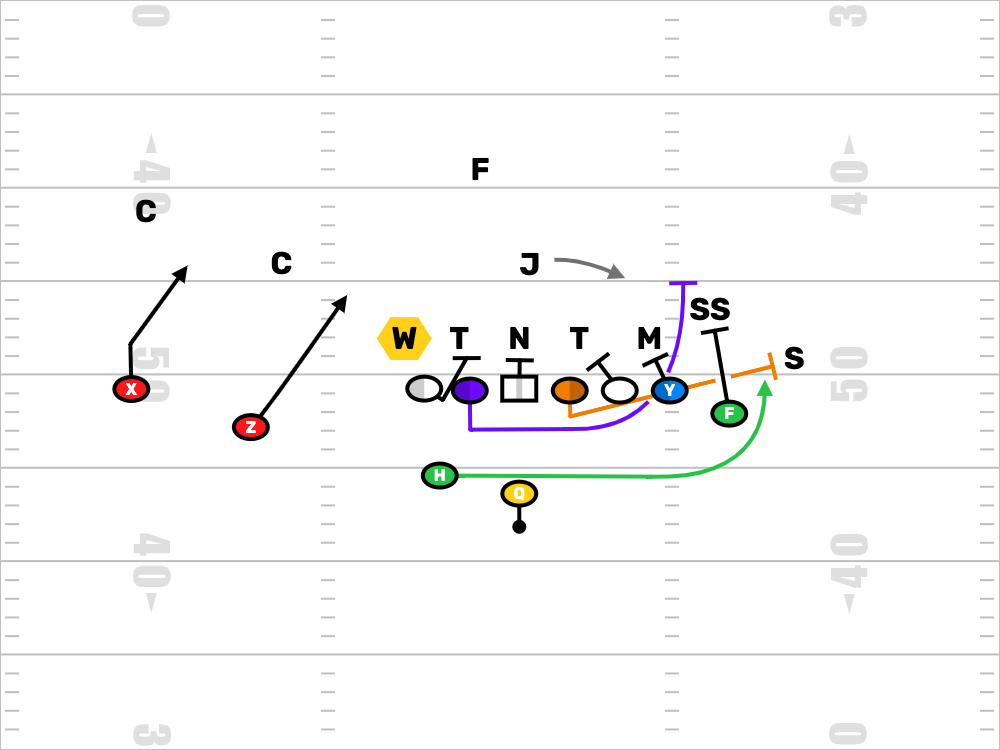
8.
Solid or Bear defenses have been a pain in the backside of offensive coordinators for a long time. This is especially true if you pull your guards on offense. Obviously, the Buck Sweep requires that you pull both guards. This slot wing version of the Wing T allows your quarterback to read the 5 technique in the Bear defense. This play could be read as a quarterback keep option or even as throw to the slot receiver based on the Will linebacker’s reaction.
9.
There is no rule that says the Buck Sweep has to be run to the traditional tight end and wing side. This 3×1 version has the play going to the weak side of an under front. Yes, the technique of your backside wrap puller is a little different but the weak side defensive end is likely playing a heavy 5 technique. As you can see, your X receiver is going to crack block. That must be coached so that it falls into the rules that your league adheres to.
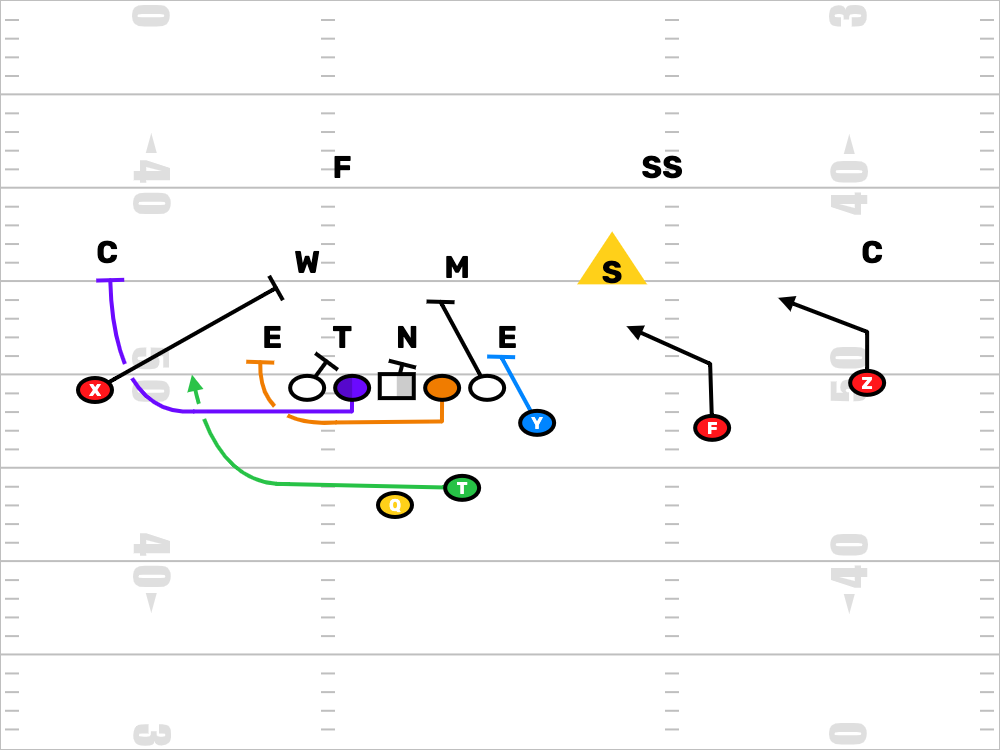
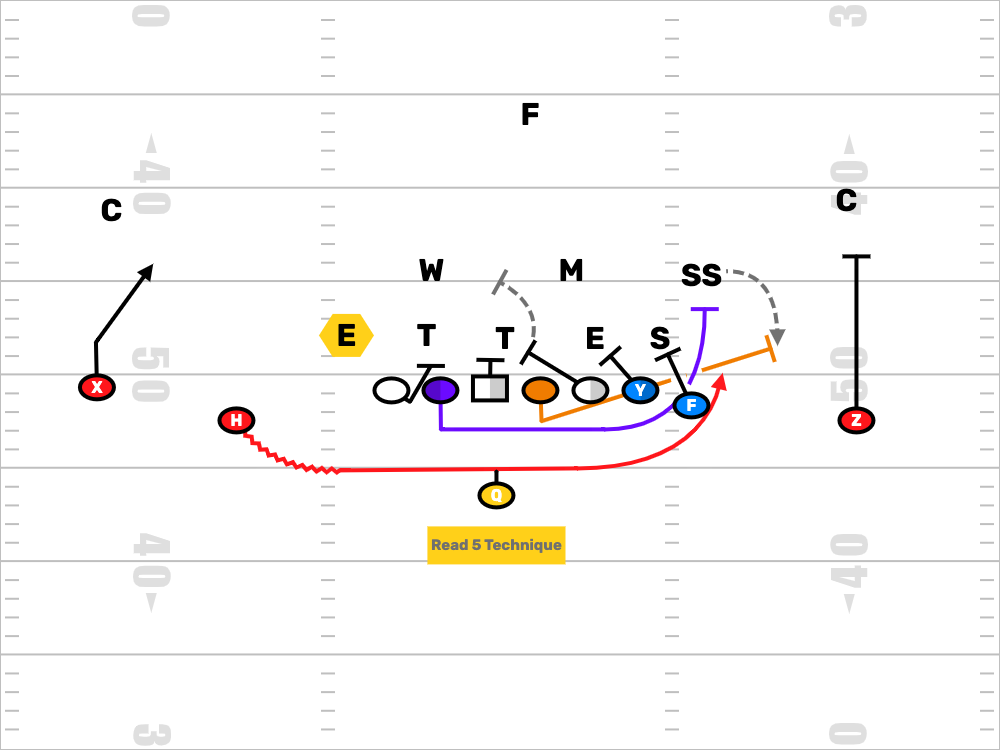
10.
This last Buck Sweep almost seems unfair. Here you are running the Buck Sweep from an empty formation to a slot receiver. Our guess is that the father of Wing T football, Tubby Raymond, would love this if he were alive to see it. The RPO principles are the same as when the quarterback is reading the defensive end. Of course, there is not threat of a trap unless you run it with your quarterback. If you want to see this version of the buck sweep, just pay attention the next time you watch Saturday or Sunday football. NFL and college coaches have begun to dial it up a lot.
Free FirstDown PlayBook Team Memberships For All 2022 HS State Champions
If you go back to the top of this article you will notice that we did not say that we would describe the only ten ways to run a Buck Sweep. There are many ways to scheme a defense with the Buck Sweep. There are many unbalanced formation versions. The Buck Sweep also shows up in 6/8/9 man football as well. If you want to see other ways to run this play, check out FirstDown PlayBook.
This offseason, we are going to focus on the Double Wing and Spread Wing T formations. There will be an abundance of help in theses areas. The main difference with what we do is that once you find your plays and schemes in FirstDown PlayBook, you do not have to draw them up. You just edit what you find and you are off and running. Sound interesting? Check out a free trial right here.
